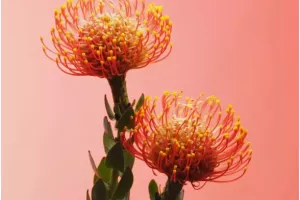Day Lilies are native to southern China, they are perennial herb with thick and short rhizomes and roots with fleshy fibers. Their leaf bases form clumps, strip lanceolate, 30-60 cm long and 2.5 cm wide, and the back is covered with white powder.
Day Lilies bloom large orange flowers in summer, and the scapes are longer than the leaves, even up to more than 1 meter; Panicle terminal, with 6-12 flowers, pedicel about 1 cm long; The flowers are 7-12 cm long, the perianth bases are thick and short, funnel-shaped, up to 2.5 cm, and the edges are slightly wavy.
Day Lilies have strong adaptability. They like humidity and are cold resistant. They like sunshine and are resistant to half shade. The selectivity to soil is not strong, but they are suitable to grow in humid soil rich in humus and well drained, which should be more than 300-2500 meters above sea level.
Day Lilies were widely planted in the Tang and Song Dynasties, often in the backyard of houses since the backyard was often the place where kids spent time with their mother. Therefore, Day Lilies became flower of mother in China. In ancient times, when sons needed to travel far, they would plant Day Lilies before they left, hoping to reduce the mother's longing for her children and forget her worries.
Day Lilies are also known as "worry-free flower", represents forgetting sorrow and troubles and returning to happiness and simplicity. They are suitable to give to frustrated friends or lovers to wish them would get out of their sadness and continue to live forward as soon as possible.


